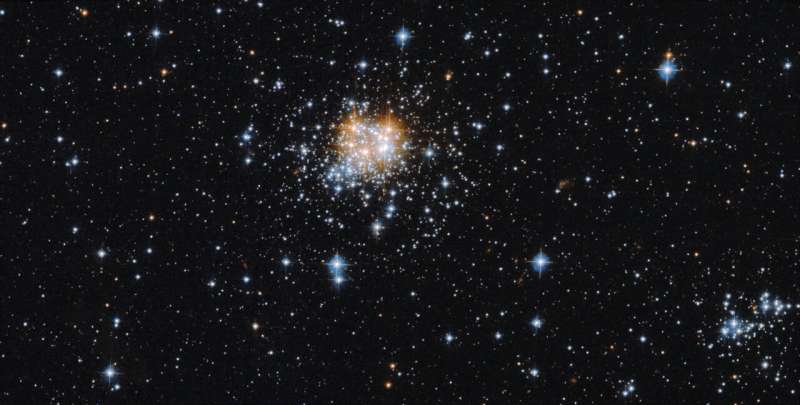Hubble observes an outstanding open cluster

A twinkling group of stars dominates the center of this image. NGC 2002 is an open star cluster that resides roughly 160,000 light-years away from Earth in the Large Magellanic Cloud, a satellite galaxy of our Milky Way containing numerous star-forming regions. NGC 2002 is about 30 light-years in diameter and is a relatively young cluster at 18 million years old.
The Large and Small Magellanic Clouds (LMC, SMC) are rich in young star clusters, making them ideal laboratories for studying stellar formation and evolution. In fact, the LMC and SMC are the only systems that contain star clusters at all stages of evolution while also being near enough to Earth to be fully resolved, meaning that one can make out and study individual stars.
NGC 2002 is more spherical than a typical open cluster, which is a type of star cluster that has low star density and an irregular shape due to the weak mutual gravitational attraction of its constituent stars. Individual stars in an open cluster can generally be observed, while the stars in a globular cluster—the other main type of cluster—are often too dense to make out even with powerful telescopes. Researchers used Hubble's high resolution and sensitivity at discerning individual stars to study NGC 2002.
NGC 2002 contains about 1,100 stars. The more massive stars in the cluster tend to sink inwards towards the center, while the lighter stars move away from the center as the cluster evolves. Visible in the center of the cluster are five red supergiants, which are physically massive but cooler stars that are fusing helium after exhausting their hydrogen fuel.
Provided by NASA's Goddard Space Flight Center





















